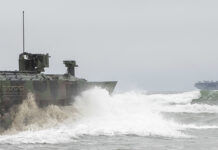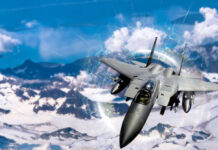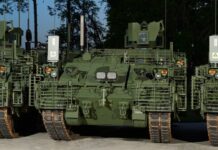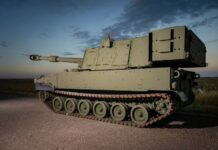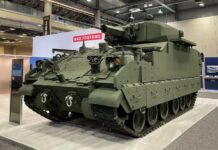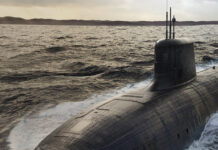The ongoing Russia–Ukraine war has shown that artillery – traditionally known as the ‘king of the battlefield’ – remains a key element of any country’s armed forces. This runs contrary to the previous assessment in many countries that modern guided munitions and aviation would mostly replace artillery. It has also become clear that modern digital artillery fire control systems can greatly improve artillery’s effectiveness, precision, munition expenditure, and reduce the time needed to react and open fire. There is a need for more attention to developments in this area, in terms of both existing and future systems, and their application on the battlefield.
Artillery fire control systems in a towed or self-propelled howitzer (SPH), mortar or multiple launch rocket system (MLRS) normally consist of a package of sensors (meteorological, inertial and satellite navigation, and in some cases muzzle velocity radar), along with a ballistic computer, communications system and automated gun laying mechanism. Almost all modern artillery now being produced are being fitted with a modern fire control system (FCS).

Credit: US Army/Capt Joe Bush
The American 155 mm M777A2 howitzer, for example, is equipped with an FCS produced by General Dynamics Mission Systems simply called ‘Digital Fire Control System’ (DFCS). It includes onboard navigation, digital communication with the fire direction centre (FDC), and automatic gun laying capability. The system is fed data from an inertial navigation system (INS), Global Positioning System (GPS), and a vehicle motion sensor to determine the weapon’s exact location and orientation for precise aiming and firing. Integrated radio communications enables data transmission between the FDC and the howitzer, and the system includes multifunctional displays to show mission data to the crew. The use of an INS allows the FCS to continue operating in the absence of a GPS signal. Aside from these capabilities, DFCS allows the M777A2 to fire the M982 Excalibur precision-guided munition.
Similar FCSs are also common on modern SPHs, such as the Hanwha K9 or BAE Systems Archer families, but unlike towed howitzers, SPHs can also supplement these with an automatic loading system, allowing for higher sustained rates of fire. Modern digital FCSs have become a critical asset for any modern artillery system, but many countries still operate legacy systems lacking these.
Upgrading legacy weapons
Legacy artillery systems, especially ones of Soviet origin, are outdated in terms of fire control – they are operated manually, with fire calculations based on range tables. Yet despite this, Soviet artillery systems such as the D-20 or D-30 remain valuable assets and are likely to stay in service for many years or even decades to come.
Several types of fire control systems are under development through industry and state efforts. They can be divided into three groups:
- Integration with offboard intelligence, surveillance, and reconnaissance (ISR) sensors for targeting;
- Comprehensive on-board performance upgrade packages;
- The use of non-integrated, offboard software-based solutions for speeding up ballistic calculation as well as command and control (C2) functions.
Offboard ISR systems, such as modern sights for forward observers (FOs), typically integrate sensors (day and thermal channels, and a laser rangefinder) along with communications systems and software to enable FOs to quickly calculate target coordinates and relevant fire control data to a friendly artillery battery. A good recent example of such a system is the Russian Malakhit automated fire control station, which consists of a tripod-mounted sight with day and thermal channels, a laser rangefinder and designator, radio, global navigation satellite system (GNSS) positioning equipment, and a firing data computer. Malakhit derives the coordinates of the target designated by the forward observer and calculates the relevant firing data for the battery to which it is attached. According to Rosoboronexport, after the target is detected, the firing data can be delivered to the battery in 15 seconds.
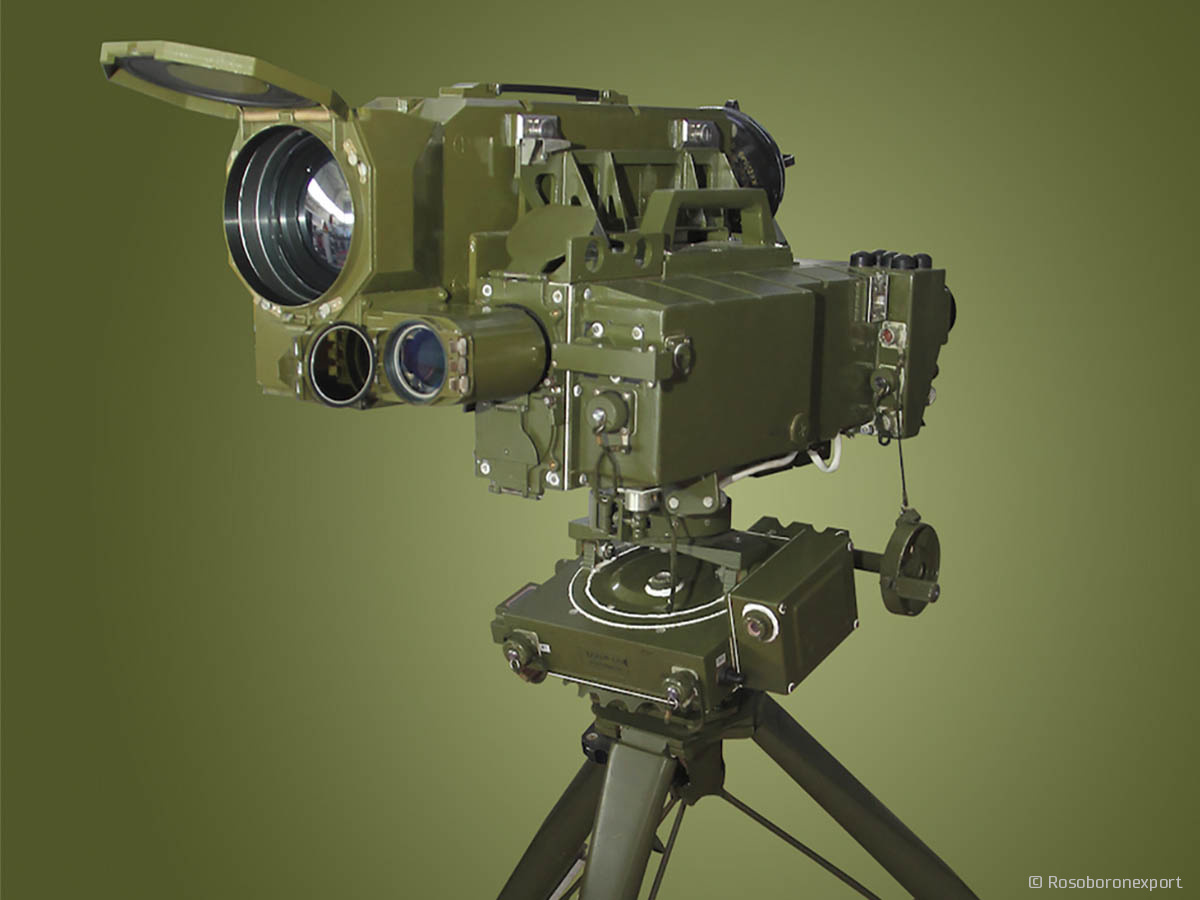
Credit: Rosoboronexport
Comprehensive upgrade packages for legacy artillery systems usually aim for major platform-level capability upgrades. They typically include components similar to those used in modern artillery weapons such as the aforementioned DFCS. Examples of such upgrade packages are LINAPS, produced by Leonardo, and the ATMOS upgrade package from Elbit Systems (distinct from the ATMOS SPH also offered by Elbit).
LINAPS includes a muzzle velocity radar, the FIN 3120L INS/GNSS navigation unit, a ballistic computer, a battery power module, and detachment commander’s data terminal (a tablet-based solution). This package can be integrated with any artillery or mortar platform. The ATMOS upgrade package goes even further, as it not only includes modern fire control system elements but also offers users the option to convert towed guns (105 mm, 122 mm, 130 mm, 152 mm, and 155 mm) into SPHs, by mounting them on 6×6 or 8×8 truck platforms. The fire control elements include INS/GNSS navigation systems, muzzle velocity radar, a ballistic computer, and can be integrated with armed forces’ existing command, control, communications, computers intelligence, surveillance, and reconnaissance (C4ISR) systems.
The lightest and cheapest options available on the market are non-integrated offboard software solutions, which can be laptop, tablet, or even smartphone-based. This kind of software typically allows for integration of C2 processes, ballistic calculations, and in some cases feeding intelligence data from different sources such as unmanned aerial vehicles (UAVs). One of the best-known examples of this type of solution was the ‘Ukrop’ app developed by Ukraine for use during the War in Donbas, during 2014–2015. The app’s name stems from a derogatory name used by some Russians for Ukrainians. It features a ballistic calculator, which allows users to calculate firing data after choosing their target on a digital map, and adding in the details of the gun type and ammunition nature being used. The application was so effective that even Russian-backed Donbas separatists started downloading and using it, while this was still possible.

Credit: Logika
This project was further developed during the 2022 Russian invasion of Ukraine, and now the Ukrainian Armed Forces (UAF) are operating the much more capable ‘Kropyva’ app. This app allows the integration of intelligence data from satellites, UAVs, and land units into decision-making and targeting processes. Intelligence data is used to facilitate and automate C2, providing commanders with data, supporting decision-making, and enabling effects. The app has been shown to be effective, and Ukrainian troops used Kropyva and GIS Arta C2 software to coordinate artillery strikes from the start of Russia’s February 2022 incursion.
Commanders use such systems to synchronise reconnaissance and artillery operations. Once targets are detected and identified by UAVs or satellites, the information is uploaded onto an interactive map, enabling commanders to allocate targets to nearby batteries and, at times, to individual guns. The entire operation is managed using tablets and laptops connected to the internet via Starlink or other sources. The time claimed from target detection to firing is approximately 60 seconds, significantly faster than conventional targeting procedures. Moreover, the claimed circular error probable (CEP) for firing unguided ammunition is notably reduced. This aligns with the observed outcomes of artillery use by the UAF, including numerous direct hits on moving armoured vehicles – an uncommon feat for artillery.
The improvement to decision-making provided by such apps enabled the UAF to mount a robust defence against the Russian Armed Forces during the spring and summer of 2022. Despite having significantly fewer pieces of artillery and lower ammunition usage, the UAF made effective use of their resources. Official Ukrainian sources estimated the rate of fire from Russian artillery initially at 60,000 shells per day, which were then estimated to have decreased to 20,000 shells per day. Concurrently, US sources estimated the Ukrainian rate of fire to be in the region of 4,000–7,000 shells per day. Using offboard software to assist with targeting and C2 facilitates the more efficient use of individual artillery pieces compared to coordinating fire with artillery detachments in classical batteries. This in turn complicates counter-battery fires, particularly if camouflage is employed effectively to conceal the locations of artillery detachments.

Credit: Logika
It is noteworthy that this concept is being developed and applied by many small and mid-sized players in the armaments market, including Romania and Egypt. Even Armenia, with limited funds and faced with a challenging security situation, has been able to create a digital solution very close to Ukraine’s Kropyva. This approach to fire control is much more cost-effective than bespoke hardware-based solutions, which can of course provide greater pace and accuracy, but take more effort, money, and time to introduce to the armed forces. The combination of ISR UAVs, which are now becoming a very affordable means of waging war, and such software packages can boost the artillery capacities of even the smallest and least well-equipped militaries, providing them with artillery capabilities not dramatically worse than major NATO armies.
Integration
The largest and most important pillar of artillery fire control is integration of all available weapons into the armed forces’ C4ISR network. Many of the solutions mentioned above provide options to connect modern or upgraded guns to the general armed forces network. For example, the US FDC allows integration of full artillery brigade and coordination of firing missions using a computerised command centre. Batteries and even individual guns can acquire very detailed data on the number and type of munitions that should be fired at particular targets, making operations much more coordinated and effective.
In Europe, various actors have also has also placed great emphasis on such integration. For instance, the Thales ‘Commander Fire’ system integrates field artillery assets from the command post down to the individual gun. This allows users to manage field artillery intelligence, planning, manoeuvres, and fire missions as an integrated system, with tactical data shared across networked information nodes. This provides shared situational awareness and allows reconfiguration between organic or attached artillery units, improving both effectiveness and survivability. Commander Fire also facilitates automated mission management to support various artillery tasks, including planning, target acquisition, coordination of manoeuvres, airspace management, fire control, and logistics.
Once again, it is important to note that there are new players on the market even in this highly complex domain. Compared to the situation 20–30 years ago, digital solutions have become significantly more affordable, and many countries have IT capabilities that allow the creation of at least limited networks within their armed forces, in some cases even using dual-use or commercial hardware. This applies particularly to communications systems. Some solutions mentioned above such as Kropyva provide valuable C4ISR capabilities in addition to pure artillery fire control, even if their role is primarily to coordinate artillery rather than other armed forces domains.
The last important perk of using such tools is that they can alleviate many of the issued faced by armies using multiple different kinds of artillery pieces, made by different manufacturers to different standards, and even different calibres. Instead of having to train crews on existing firing tables for each individual system, software-based systems can easily provide the required firing data to any type, be it a Soviet D-20 towed howitzer or a French CAESAR SPH. This reduces the time needed to make artillery crews ready for battlefield deployment.
Conclusions
The most recent interstate wars, including the ongoing Russia–Ukraine war and the Second Nagorno-Karabakh War in 2020 show that traditional approaches to artillery fire control are not particularly effective on the modern battlefield compared to digital solutions. Even if armed forces possess a large number of artillery assets, without a certain level of digitalisation, artillery typically reacts too slowly and relies too much on weight of fire to achieve effects. Moreover, legacy systems used in large batteries become a much easier target for counter-battery fire, especially when they need to stay in one position for a long time, since aerial reconnaissance capabilities have dramatically increased, with UAVs becoming a very common sight on the modern battlefield.

Credit: SSU
Modern artillery FCSs cut reaction times and make it possible for units to operate effectively even when dispersed, through their use of networked communications. Moreover, the greater accuracy of fire they can provide not only boosts the effectiveness of fire missions, but also reduces munitions expenditure – even more if the system allows the use of GNSS or semi-active laser (SAL) guided rounds. The procurement of artillery with modern FCSs or the introduction of upgrade packages/software solutions for legacy weapons is a necessity. At the same time, the much higher availability of such systems on the market enables smaller countries’ armed forces to rapidly improve their capabilities. This, along with other technologies becoming more affordable, can improve the odds for smaller countries seeking to defend themselves against larger adversaries.
Leonid Nersisyan






